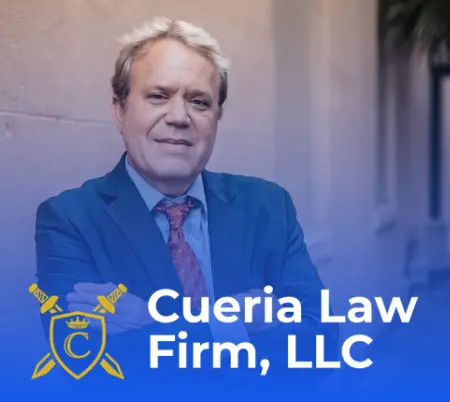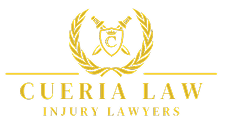In personal injury law, settlements often provide an efficient resolution to complex cases, especially those involving multiple insurance policies or significant damages. One important settlement tool that has emerged in cases involving exhausting primary policy limits is the Gasquet settlement. Named after a landmark case in Louisiana, Gasquet v. Commercial Union Insurance Co., this settlement framework is used to resolve disputes when the primary insurance policy is insufficient to cover the full extent of the plaintiff’s damages.
In this blog, we’ll explore what a Gasquet settlement involves, particularly how it relates to exhausting primary insurance limits, and why this settlement type is valuable for resolving personal injury claims.
What Is a Gasquet Settlement?
A Gasquet settlement is a legal strategy that helps a plaintiff settle with the primary insurance carrier while still retaining the ability to pursue additional compensation from an excess carrier. The term “Gasquet settlement” comes from the 2004 Louisiana case Gasquet v. Commercial Union Insurance Co., where the plaintiff alleged serious personal injury following a car accident.
In this case, the plaintiff settled with the primary insurer (Commercial Union) for $200,000, even though the policy limit was $300,000. In doing so, the plaintiff fully released the primary insurer from any further liability but kept the excess carrier (Stonewall Insurance) in the picture. The settlement allowed the plaintiff to continue pursuing a claim against Stonewall for the remaining damages, despite the primary policy not being fully exhausted.
The core of the issue was that the excess carrier, Stonewall, argued that it was not obligated to pay unless the primary policy was fully exhausted. Since the primary insurer paid less than the full $300,000 policy limit, Stonewall denied the claim. The court, however, rejected Stonewall’s position, ruling that the plaintiff was entitled to pursue a direct claim against the excess insurer. In doing so, the court held that Stonewall would receive a credit for the full $200,000 paid by the primary insurer, even though the full policy limits were not exhausted. This decision effectively allowed the plaintiff to bypass the “exhaustion” requirement and pursue additional compensation from the excess carrier directly.
The Gasquet release has since become a staple of Louisiana litigation, particularly in personal injury cases where multiple insurance policies are involved and the primary insurer does not pay the full policy limit.

Key Elements of a Gasquet Settlement in Personal Injury Law
Gasquet settlements have several defining features that allow plaintiffs to maximize the compensation available in complex cases involving multiple insurers. Here are the core elements of a Gasquet settlement:
1. Exhaustion of Primary Insurance Coverage
The defining feature of a Gasquet settlement is the exhaustion of primary policy limits. In cases where the primary insurance policy is insufficient to cover the full damages, the plaintiff settles with the primary insurer for less than the policy limit. This allows the injured party to secure some compensation while keeping the door open to pursue additional claims from an excess carrier (or other secondary sources).
In the original Gasquet case, the plaintiff settled for $200,000, even though the policy limit was $300,000. This created a situation where the plaintiff could pursue the remaining $100,000 from the excess insurer, Stonewall Insurance.

2. Releasing the Primary Insurer but Not the Tortfeasor
As part of the settlement, the injured party agrees to release the primary insurer (e.g., Commercial Union) from further liability but does not release the tortfeasor (the at-fault party). This release is key because it allows the plaintiff to keep the tortfeasor in the lawsuit as a “nominal defendant”. The tortfeasor remains involved in the case, even though they have no further liability, in order to allow the plaintiff to pursue claims against the excess carrier.
This approach effectively allows the plaintiff to exhaust the primary policy while ensuring the tortfeasor remains in the lawsuit for the purpose of going after the excess insurance policy.
3. Credit for Primary Policy Payment
After the settlement, the excess insurer (Stonewall) argued that it was not obligated to pay anything because the primary policy was not fully exhausted. However, the court ruled that the plaintiff was entitled to a direct action against the excess insurer. The excess carrier was required to pay for the remaining damages, but it received a credit for the amount already paid by the primary insurer (in this case, the $200,000), even though the full primary policy limits had not been exhausted.
This ruling allowed the plaintiff to recover additional compensation beyond the primary policy limit and established the framework for Gasquet settlements in Louisiana personal injury law.
4. Avoiding Prolonged Litigation
Gasquet settlements offer a practical way to resolve complex cases without the need for protracted litigation, especially when the primary insurer’s policy limits are not sufficient to fully compensate the injured party. By settling with the primary insurer and releasing it from liability, the plaintiff can pursue the excess insurer directly, saving both time and legal costs that would otherwise be spent on a lengthy trial.
A Gasquet settlement provides a flexible and effective approach for resolving personal injury claims, particularly in cases where primary insurance limits are exhausted but additional coverage is needed. By negotiating a settlement with the primary insurer while keeping the tortfeasor in the lawsuit, plaintiffs can maximize the recovery they are entitled to, especially when the primary policy is insufficient.
How We Can Help You
If you are involved in a personal injury case that involves multiple insurance policies and complex issues surrounding primary and excess coverage, it is crucial to work with an experienced attorney who understands the nuances of Gasquet settlements. Brent Cueria and his team of experienced professionals can help you navigate the settlement process, ensure your rights are protected, and help you secure the compensation you deserve.



